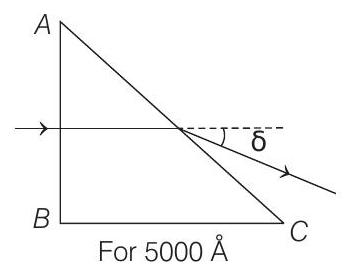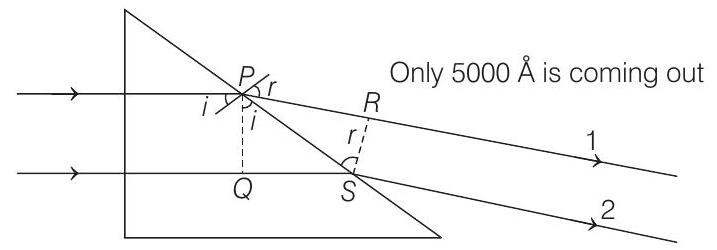Optics 7 Question 43
44. Two parallel beams of light

The refractive index of the prism as a function of wavelength is given by the relation,
(a) Find the value of
(b) Find the deviation of the beams transmitted through the face
(c) A convergent lens is used to bring these transmitted beams into focus. If the intensities of the upper and the lower beams immediately after transmission from the face
Show Answer
Answer:
Correct Answer: 44. (a)
Solution:
- (a) Total internal reflection (TIR) will take place first for that wavelength for which critical angle is small or
From the given expression of
 of
of
Thus, condition of TIR is just satisfied for
or
Solving this equation, we get
(b)


For,
or
For
Applying
(c)

Path difference between rays 1 and 2
Further,
Substituting in Eq. (i), we get
Or these two rays will interfere constructively. So, maximum intensity will be obtained from their interference.
NOTE In this question we have written,
because in medium angle with normal is
or






